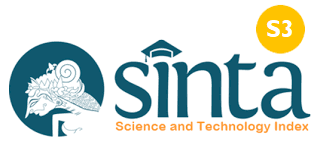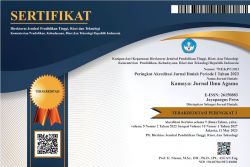Dharmagitha as a Strategy for Character and Skills Education Based on Local Wisdom in the Elementary School
DOI:
https://doi.org/10.37329/kamaya.v8i3.4707Keywords:
Dharmagitha, Character Education, 21st Century Skills, Local Wisdom, Elementary SchoolAbstract
Character education and 21st-century skills are urgent needs in Indonesia’s basic education system. In the context of Balinese culture, Dharmagitha is a sacred chant rich in Hindu ethical and spiritual values, with great potential as an educational medium steeped in local wisdom. This study aimed to examine the role of Dharmagitha as a learning strategy that can shape the noble character and basic skills of elementary school students. Through a descriptive qualitative approach, this study revealed that the integration of Dharmagitha in learning activities not only strengthens students’ cultural identity and spirituality but also fosters values of discipline, responsibility, cooperation, as well as literacy and musicality. Additionally, this strategy encouraged students to engage in contextualized, fun, and meaningful learning. Thus, Dharmagitha has proven to be an effective alternative strategy for character and skills education, grounded in local wisdom, making it relevant to today’s educational needs.
References
Ariyoga, I. N. (2025). Transformasi Nilai-Nilai Luhur Dalam Lontar Dharma Śāsana Sebagai Fondasi Pendidikan Sasana Hindu Di Era Modern. Jurnal Penelitian Agama Hindu, 9(3), 262-281.
Artha, I. M. C., & Pitriani, N. R. V. (2024). The Existence of Hyang Waringin Temple in Kubu Customary Village:(Perspective of Hindu Religious Education). International Journal of Multidisciplinary Sciences, 2(3), 298-309.
Budayasa, I. M. R., & Dharmawan, K. A. (2023). Implementasi Ajaran Tri Kaya Parisudha Dalam Pembelajaran Pendidikan Agama Hindu Dan Budi Pekerti di SD Taman Tirta. Metta: Jurnal Ilmu Multidisiplin, 3(4), 516-530.
Eaton, S. E., Brown, B., Schroeder, M., Lock, J. & Jacobsen, M. (2017). Signature Pedagogies for e-Learning in Higher Education and Beyond. Calgary: University of Calgary
Epstein, J. L., Galindo, C. L., & Sheldon, S. B. (2011). Levels of Leadership: Effects of District and School Leaders on the Quality of School Programs of Family and Community Involvement. Educational Administration Quarterly, 47(3), 462-495.
Kohlberg, L. (1981). The Philosophy of Moral Development: Moral Stages and the Idea of Justice. New York: Harper & Row
Kohlberg, L., & Power, C. (1981). Moral Development, Religious Thinking, and the Question of a Seventh Stage. Zygon: Journal of Religion and Science, 16(3).
Mandra, I. W. (2023). The Relationship Between Hindu Religious Education Learning Outcomes and Students' Affective Aspects. International Journal of Multidisciplinary Sciences, 1(1), 113-124.
Narvaez, D. (2010). Moral Complexity: The Fatal Attraction of Truthiness and the Importance of Mature Moral Functioning. Perspectives on Psychological Science, 5(2), 163-181.
Northouse, P. G. (2025). Leadership: Theory and Practice. Western Michigan University: Sage Publications.
Piaget, J. (1972). A Structural Foundation for Tomorrow's Education. Prospects, 2(1), 12-27.
Prasetya, I. P. A. (2021). Pola Pelatihan UKM Dharmagita Jawa Dalam Penguatan Pendidikan Karakter Mahasiswa di Universitas Hindu Negeri I Gusti Bagus Sugriwa Denpasar. Metta: Jurnal Ilmu Multidisiplin, 1(3), 175-179.
Pratiwi, N. K. S. (2022). Metode Pembelajaran Dasa Dharma Sebagai Implementasi Pendidikan Holistik. Metta: Jurnal Ilmu Multidisiplin, 2(3), 133-145.
Putri, I. A. N. B. (2022). Strategi Pendidikan Agama Hindu Berbasis Sad Dharma. Kamaya: Jurnal Ilmu Agama, 5(3), 125-140.
Setyaningsih, S. (2019). Implementasi Pembelajaran Pendidikan Agama Hindu Dalam Pembentukan Karakter Anak Hindu Di Sekolah Dasar Negeri Surakarta. Cetta: Jurnal Ilmu Pendidikan, 2(2), 297-332.
Suardana, I. K., Sukarlinawati, W., & Suwendra, I. W. (2023). The Importance of Hinduism And Cultural Education Role Through Customary Village-Based Non-Formal Education to Maintain the Integrity of Bali. International Journal of Multidisciplinary Sciences, 1(4), 403-414.
Sudarsana, I. K., & Arwani, G. P. Y. (2018). Internalisasi Pendidikan Karakter Melalui Pelaksanaan Dharmagita Pada Sekaa Teruna. Kamaya: Jurnal Ilmu Agama, 1(1), 1-18.
Trimo, T. (2025). Implikasi Karakter Pradnyan dan Purusottama Terhadap Peningkatan Hasil Belajar Agama Hindu pada Peserta Didik Utama Widyalaya Wira Dharma Palu. Jurnal Penelitian Agama Hindu, 9(2), 112-126.
Wiasti, N. K. (2025). Revitalisasi Pendidikan Dharmagita Pada Generasi Muda Di Provinsi Nusa Tenggara Barat. Jurnal Penelitian Agama Hindu, 9(3), 177-194.
Zins, J., Bloodworth, M., Weissberg, R., & Walberg, H. (2004). The scientific base linking social and emotional learning to school success. In J. Zins, R. Weissberg, M. Wang, & H. J. Walberg (Eds.), Building academic success on social and emotional learning: What does the research say? (pp. 1-22). New York: Teachers Press, Columbia University.
Downloads
Published
How to Cite
Issue
Section
License
Copyright (c) 2025 Kamaya: Jurnal Ilmu Agama

This work is licensed under a Creative Commons Attribution-ShareAlike 4.0 International License.
An author who publishes in the Kamaya : Jurnal Ilmu Agama agrees to the following terms:
- Author retains the copyright and grants the journal the right of first publication of the work simultaneously licensed under the Creative Commons Attribution-ShareAlike 4.0 License that allows others to share the work with an acknowledgement of the work's authorship and initial publication in this journal
- Author is able to enter into separate, additional contractual arrangements for the non-exclusive distribution of the journal's published version of the work (e.g., post it to an institutional repository or publish it in a book) with the acknowledgement of its initial publication in this journal.
- Author is permitted and encouraged to post his/her work online (e.g., in institutional repositories or on their website) prior to and during the submission process, as it can lead to productive exchanges, as well as earlier and greater citation of the published work (See The Effect of Open Access).
Read more about the Creative Commons Attribution-ShareAlike 4.0 Licence here: https://creativecommons.org/licenses/by-sa/4.0/.





